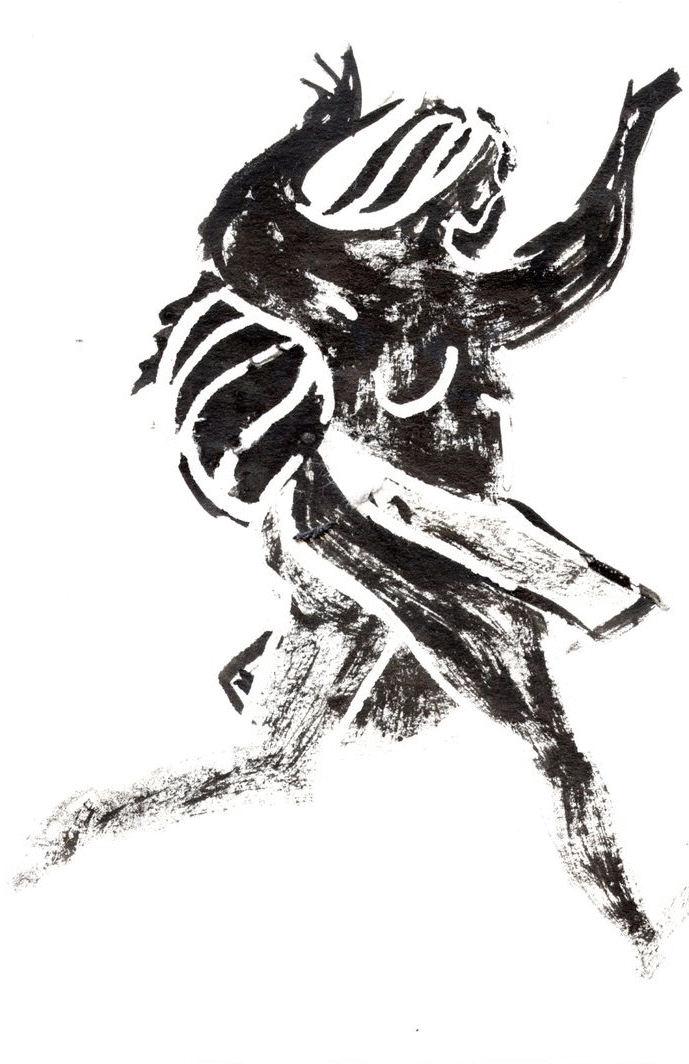Home is not just a place, for me it’s the feeling that's not so easy to capture. The moments of feeling truly connected to yourself. For me it was, and still is a very intimate journey through memoires, family conections roots and culture.
In my artistic work, I explore cultural elements that have been passed down from generation to generation and how they can affect one's sense of identity, while at the same time how they can be reinterpreted in a contemporary context. These explorations often comes down to recreating and giving new meanings to rituals and attributes taken from Lemko culture where I find my origin and roots.
Lemkos are a West Slavic ethnic group, historically inhabiting the Bieszczady- range of mountains on the border of Poland, Ukraine and Slovakia. This small community, however, has a sense of identity, a distinct culture, rituals, traditions and even language and folk melodies. In the 20th century, they experienced a tragic history related to World War II and Operation Vistula, which resulted in their relocation from their beloved mountains to western Poland, leaving behind their previous life and culture. This community was also home to my grandparents, they led a simple life among nature, grazing horses, singing songs...
The last link between me and this disappearing culture for me was my grandmother. In the house where I grew up I sometimes heard the Lemko language, and some of the small family rituals were also preserved. The memory of spreading honey on us children during the holidays is strongly preserved in my memory. Honey was supposed to be a good fortune, provide good luck, and sweet life for the whole year. My mother would leave a mark of honey on our foreheads, because that's what our grandmother also did for her children.
Her death awakened in me a deep need to get to the source and search for my roots to answer the question of who I am and where I belong. I started to read and learn about the culture, I wrote my batchelors degree on lemkos elements in art of Nikifor Dworniak. I started to notice little smilarieties with my ancestores, true mountain people, for example my short height, my long hair Iused to braid, my tempare, my love for hiking and sleeping under the sky, the fact that I’m surprisingly strong for my height. Finally I discovered folk music and my own voice which made a great impact on my life. I even formed a music folk band naming it foremother. Slowly I startet do define myself through this culture that I was never fully a part of. This experience opened my mind to the aspect of identity in a broader sense...
My memory of the childhood ritual and the Honey has become a tool in my artistic work. It first appeared as an object in an artwork entitled Grandmother's Honey, which became a starting point for Hady Jakysy - solo exhibition curated by phd Aleksandra Kubiak (2018). On a wooden pedestal covered with a grandmother's shawl, I placed a jar of honey, and on it I placed a cross with a shape characteristic of Lemko areas. The objects were accompanied by a recording of a lullaby in the Lemko language that I remembered from my childhood.
miejsce: Fundacja Salony, Zielona Góra
HONEY II
In this video, the honey jar is opened and the ritual of self-care ang good fortune, after the death of my grandmother, I perform on myself. The repetitive, almost mantric movement renews its cycle with the successive verses of the Lemko lullaby. The melody and text sung from memory is one of the few elements connecting me to the fading Lemko culture. It also relates to the themes of memory, feminine power, creation and grounding one's identity.
HONEY III
In this piece I invite other women to share the proces with me. Together we leave honey traces of our presence in a space, geographically foreign to each of us, expanding the boundaries of our own cultures, roots and experiences. I let everyone bring their own meaning to the ritual whih for me was expanding the good fortune and the gesture of love and protection to the space around me, giving back to nature, tame the unknown place and make it my own. Participating in the activity were Adrianna (Poland), Beata (Poland), Diana (Ukraine), Miriam (Denmark), Parissa (Germany/Italy), Romana (Ukraine).
